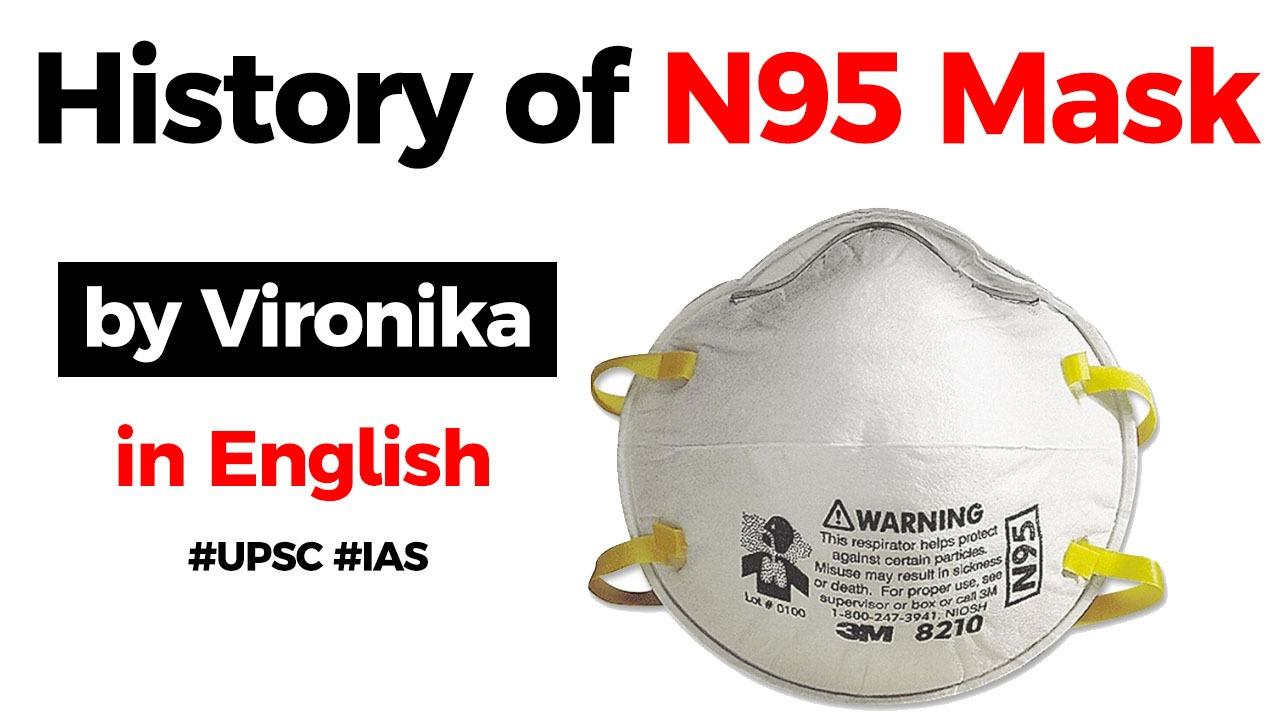Table of Contents
History of N95 mask
- Since the COVID-19 outbreak in China, shortage of PPE gear and masks has been reported from across the world.
- The most important design object of our time was more than a century in the making.
- A disposable N95 mask (respirator) is a safety device that covers the nose and mouth and helps protect the wearer from breathing in some hazardous substances.
- An N95 respirator is designed to achieve a very close facial fit and very efficient filtration of airborne particles.
- There are even paintings from Marseilles in 1720, which was the epicenter of the bubonic plague, that show gravediggers and people handling bodies with cloth around their faces, even though the plague was spread by the bites of fleas that traveled on rats.
- The reason these people were wearing cloth around their mouths and noses was, at the time, they generally believed diseases like the plague were miasma, or gases emanating from the ground.
- It wasn’t to protect you from another person, they believed plague was in the atmosphere—corrupt air.
- Elongated masks resembled large bird beaks and had two nostril ports at the edge of the mask that could be loaded with incense. People thought that by protecting themselves from the smell of the plague, they’d be protected from the plague itself.

- By the late 1870s, scientists learned about bacteria. Miasma fell from fashion as the modern field of microbiology emerged.
- Doctors started wearing the first surgical masks in 1897. They weren’t much more than a glorified handkerchief tied around one’s face, and they weren’t designed to filter airborne disease
- This distinction between a mask and a respirator is important. It’s why healthcare professionals are upset that they’re being instructed to wear surgical masks when respirators are unavailable. Masks are not only made of different materials; they fit loosely on the face, so that particles can come in from the side. Respirators create an airtight seal so they actually filter inhalation.

THE FIRST MODERN RESPIRATOR IS BORN FROM PLAGUE
- In the fall of 1910, a plague broke out across Manchuria— what we know now as Northern China—which was broken up in politically complex jurisdictions shared between China and Russia.
- Both Russia and China want to prove themselves worthy and scientific enough, because that would lead to a claim of sovereignty.
- The Chinese Imperial Court brought in a doctor named Lien-teh Wu to head its efforts. He was born in Penang and studied medicine at Cambridge.

- After conducting an autopsy on one of the victims, Wu determined that the plague was not spread by fleas, as many suspected, but through the air.
- Expanding upon the surgery masks he’d seen in the West, Wu developed a hardier mask from gauze and cotton, which wrapped securely around one’s face and added several layers of cloth to filter inhalations. His invention was a breakthrough

- Medical staff wore them, soldiers wore them, and some everyday people wore them, too.
- Not only did that help thwart the spread of the plague; the masks became a symbol of modern medical science looking an epidemic right in the eye.
- When the Spanish flu arrived in 1918, Wu’s mask was well-known among scientists and even much of the public. Companies around the globe increased production of similar masks to help abate the spread of flu.
- The N95 mask is a descendant of Wu’s design. Through World War I and World War II, scientists invented air-filtering gas masks that wrapped around your entire head to clean the air supply. Similar masks, loaded with fiberglass filters, began to be used in the mining industry to prevent black lung.

- This equipment saved lives, but it was burdensome, and a large reason why were the filters. The fiberglass required a lot of effort to breathe, and the full head enclosures were hot to wear.
- Imagine working in construction in 85-degree heat and having your head wrapped in rubber to protect yourself from an invisible threat.
- By the 1970s, the Bureau of Mines and the National Institute for Occupational Safety and Health teamed up on creating the first criteria for what they called “single use respirators.”
- The first single-use N95 “dust” respirator as we know it was developed by 3M, and approved on May 25, 1972.
- The longer you wear an N95 respirator, the more efficient it becomes at filtering out particles.
- More particles just help filter more particles. But breathing becomes more difficult over time as those gaping holes between the fibers get clogged up with particles, which is why an N95 respirator can’t be worn for more than about eight hours at a time in a very dusty environment.
- It doesn’t stop filtering; it just prevents you from breathing comfortably.
- The N95 respirator isn’t perfect. It isn’t designed to seal well to the face of children or those with facial hair, and if it doesn’t seal, it doesn’t work as advertised.
- Furthermore, the N95 variants that are worn in high-risk operating rooms don’t have an exhalation valve, so they can get particularly hot to wear.
- But the N95 respirator evolved over hundreds of years in response to multiple crises. That evolution will only continue through and beyond the COVID-19 pandemic

Latest Burning Issues | Free PDF






















 WhatsApp
WhatsApp